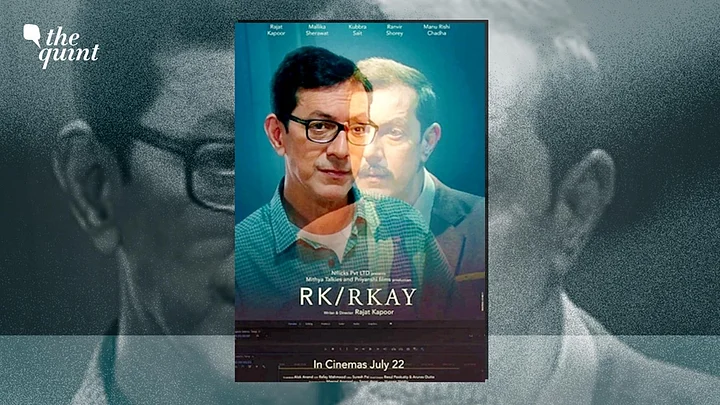The film RK/RKay by director Rajat Kapoor, portrays a double role of a director and his character in the film within the film. When it is nearing its completion and is at the editing stage, the actor that is a partial self of the director Rajat Kapoor himself, vanishes. Even from the negatives. He runs away even from places where he was supposed to have a permanent linear existence.
He runs away to meet his love Gulabo played by Mallika Sherawat in the film. Mahboob, the character etched by Rajat Kapoor in the film, returns as a full-fledged ‘being’ who refuses to go back into the film and die. He refuses to follow the role even though he remains restricted within the lines written for his character by the director.
Mahboob is loved by the director RK’s family and friends more than RK himself who plays the director’s role within the film. The insistence on this tedious operational chain is the key to understanding how identities come as bundles.
Of Film Parallels & Quest for Identities Amid Crisis
In the Federico Fellini film 8 1/2, the critic talking to the director playing the director in the film, appreciates the director’s choice to drop the film he was making. The critic says “But then is there anything so clear and right that it deserves to live in this world?”
The scene where Mahboob refuses to go back into the film and play his role in RK/Rkay, and the point in 8 1/2 where the critic has this conversation with the director — coincide.
Both moments overflow with all things wrong with the linear approach to life through correctness and clarity. The critic carries on, “Of any artist truly worth the name, we should ask nothing except this act of faith: to learn silence.” And that is when Guido Anselmi, the director (played by Federico Fellini in the film), decides to make his film even though the characters don’t get along.
Throughout the film, we don’t know whether those characters are real or in the director’s mind, his creations. They are perhaps both but they don’t obey the script. In RK/Rkay, Mahboob does not follow the script either. He wants to live for no other reason other than that he is alive. The silences in Rajat Kapoor’s film come as poignant pauses indicating that the film will not end as scripted.
Dwelling in Microcosm of Individual Selves..
Identities are not neatly packed categories. We harbor fugitive identities within us, partial selves that don’t get along and may nurture many small hypocrisies in being alive with each other. We exist as such a whole of fibers always ready to connect in sensibility with something or somebody else consciously unknown to us.
Jacques Rancière, the French philosopher, historian, and scholar says that when we see before thinking, that is when we are truly seeing. It is this sight which is the place of potential from where imagination takes flight into the unthinkable.
Like the partial self, a character living within the words given to his role etched out on paper can run away while staying within the bounds of those words. These words are truer in Mahboob’s voice than in the director’s voice who wrote the words. The director is the auteur but is he really one?
Can anybody be fully in charge of their many selves? The image created by the director acquires a life of its own. Hito Steyerl, an artist and philosopher, says , “The reality we live in consists of images because images have begun crossing the screen and materialising within reality.”
These images, she says, don’t cross the screen without some bruising and bumping which are not necessarily degradations. They are capable of other possibilities of existence.
The film RK/Rkay may have been a film within a film set in a different time, but it expresses the possibilities of the computational and algorithmic worlds we inhabit where photographs, images, and films don’t just represent or rule by stupefaction, they also come alive and refuse to follow a scripted life.
(Eveleen Kaur Sidana is a PhD Candidate in Sociocultural Anthropology at the University of California, Davis. This is an opinion piece. The views expressed above are the author’s own. The Quint neither endorses nor is responsible for them.)
